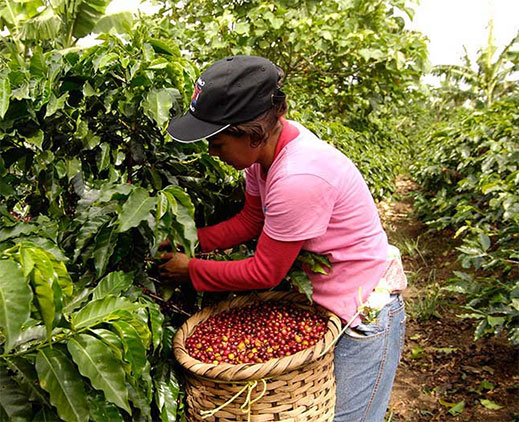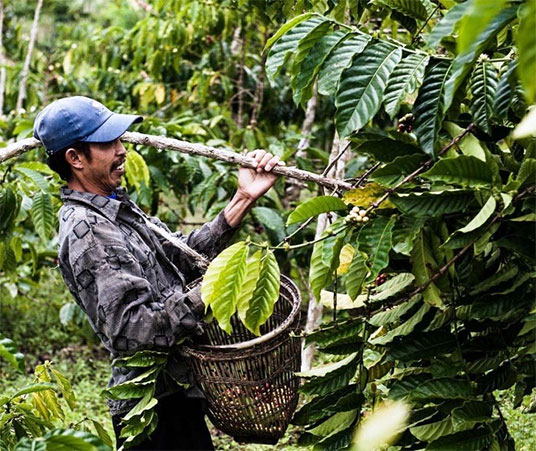How can our cup of coffee be environmental - friendly?

Coffee cultivation, processing and marketing are processes involving thousands of professionals around the world and millions of consumers - but they have, like any human activity, an environmental impact. How can we reduce the environmental footprint left by our mug?
The coffee industry includes dozens of different activities, ranging from cultivating, harvesting and processing coffee to its packaging, marketing, and, of course, extraction and consumption. Coffee is the second most popular drink in the world, and the second most widely traded comodity, after oil. The coffee chain has hundreds of thousands of workers around the world and, of course, millions of consumers. Naturally, all processes require energy, and waste is generated - and like any crop, coffee cultivation affects various ecosystems.
What can we do, as consumers, to reduce the environmental footprint of our cup? With a few simple tips, we can put a little bit of protection on the environment while enjoying our coffee.
How can we enjoy our coffee without burdening the environment?

All the processes from which coffee passes until it reaches our cup, from cultivation and processing to packaging, naturally has some environmental impact. Although most major companies are in line with international environmental protection, if we want to make sure we do the best for the environment, we can look for a number of special labels: the Rainforest Alliance seal in coffees like Lavazza Tierra states that coffee has been cultivated according to the principles of sustainable development, while organic coffee such as Lavazza Tierra Bio Organic is grown without chemical fertilizers, pesticides and insecticides. Fair trade cafes are also usually grown with environmentally friendly methods.
Even if we do not see any relevant certification, we can always do our research on the practices of the company we choose, while a decisive role in the energy footprint of a coffee plays and its processing method, beyond cultivation conditions. The "wet" method of coffee processing is much more energy-intensive than the "natural" one, as it requires much more water. We also take care that the coffee we buy is in packaging made of recyclable materials, and we do not omit to recycle the packaging according to the prescribed procedures.
 By brewing our coffee responsibly
By brewing our coffee responsibly
Extracting coffee plays a key role in our environmental footprint. Initially, the first step that some can make to make the cup more environmentally friendly is to avoid espresso capsules of any form. Although they are most made of recyclable materials, their recycling is difficult and their use accumulates much more waste than granulated coffee, and because of their nature, their extraction consumes more energy.
Still, buying coffee in a pound pack, we also reduce our waste by half compared to 500g packs and a quarter compared to 250g packs. If we have our grinding mill, or if our machine can grind coffee beans, we can buy coffee in beans in one pound packs, avoiding the polluting packaging of ground coffee.
Still, it is important to know that not all extraction methods consume the same energy. Undoubtedly, making espresso is the most energy-intensive coffee extract, followed by electric filter coffee machines. On the contrary, extraction equipment such as French Press or Pour Over coffee makers certainly consume less energy. Especially in the case of French Press or the Pour Over glass filter with a metal filter that does not require consumables, the impact on the environment is further reduced.
By managing our waste responsibly
Most of the coffee-related waste is not as much about coffee packs as with disposable plastic of all kinds, such as cups, straws, teaspoons, etc. If we want to make a substantial contribution to protecting the environment , a good start is to drastically limit the use of disposable plastic - and that is also the direction in which the European Union is moving, with relevant legislative initiatives. We can use glass multipurpose glass instead of plastic cups, and if disposable cups are necessary, we can choose biodegradable paper as well as the corresponding straws.
Only by replacing plastic with glass can reduce personal consumption of plastic by several kilograms per year, and finding alternatives to plastic straws will reduce the amount of waste that is difficult to manage and very harmful to the environment.
In addition to reducing the use of plastic, as well as recycling, where possible, of coffee packs, the "green" treatment can also have the remains of ground coffee. If we compost, ground coffee belongs to the materials that can be added to our bucket and enrich our compost. Otherwise, there are various uses of ground coffee that are particularly environmentally friendly, from using it as a fertilizer to its use as a mild detergent to avoid harmful chemicals.
In the modern age, any human activity is given as a burden on the environment to some extent. But with some simple tips, our contribution to environmental protection is in our hands - and in our cup!










